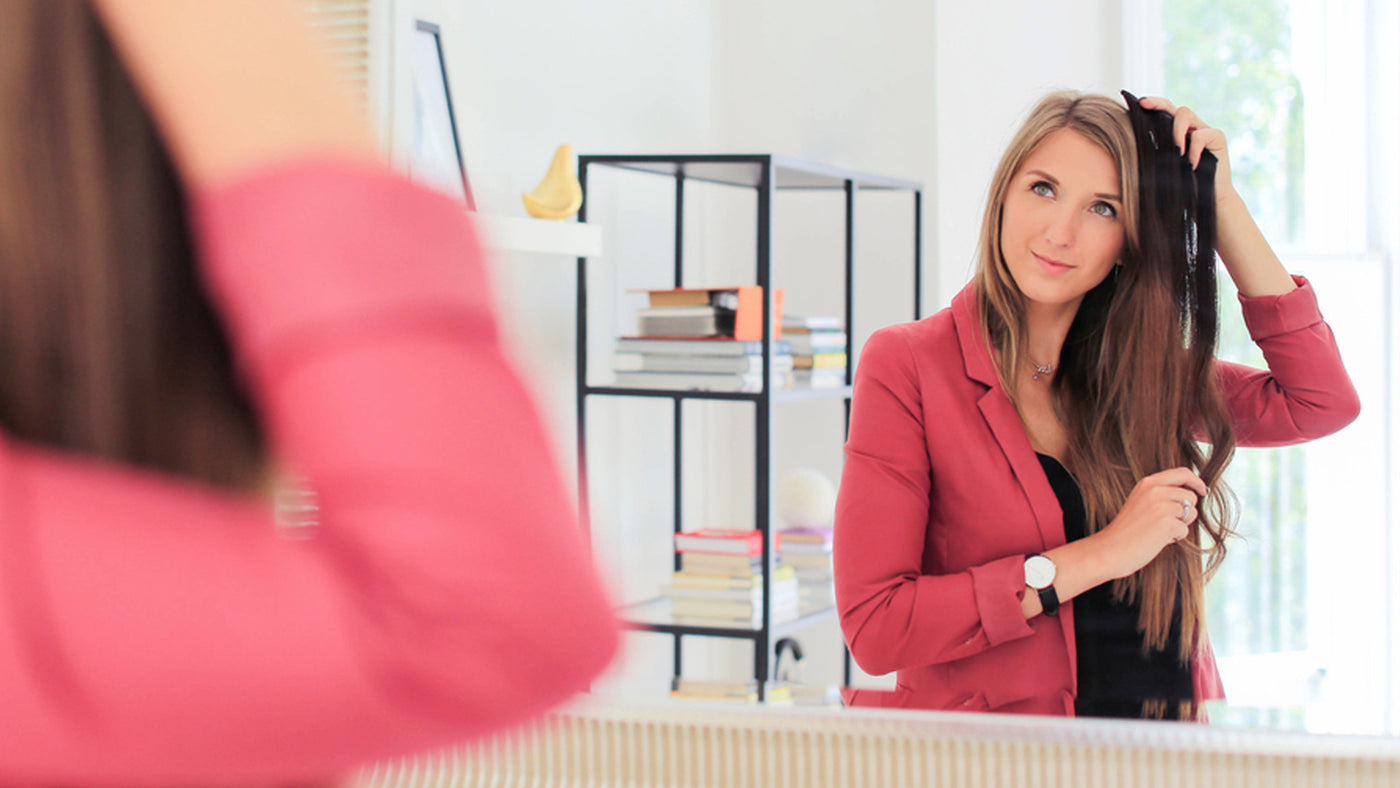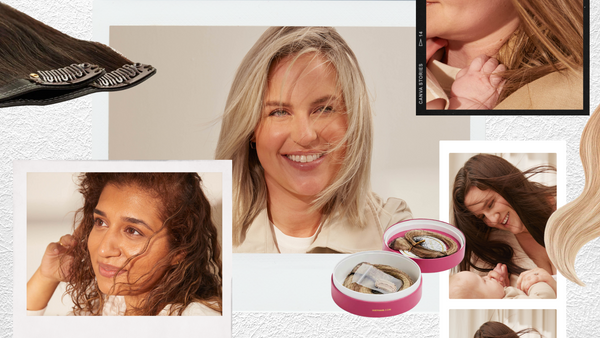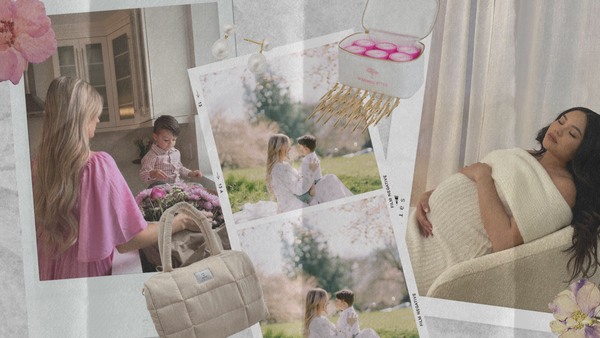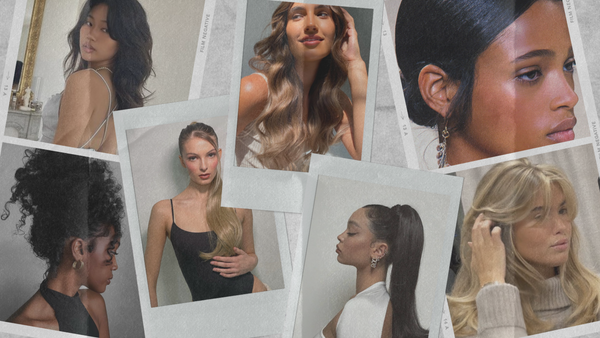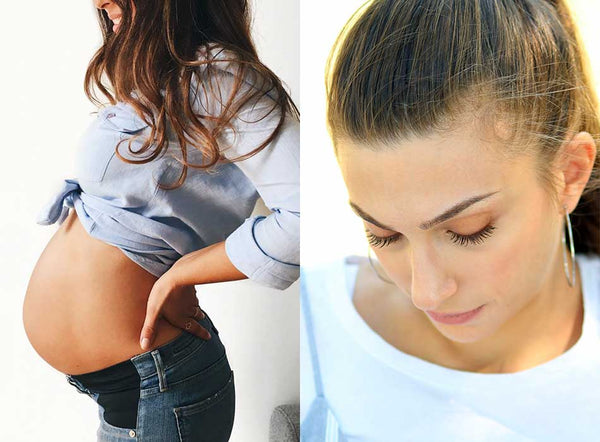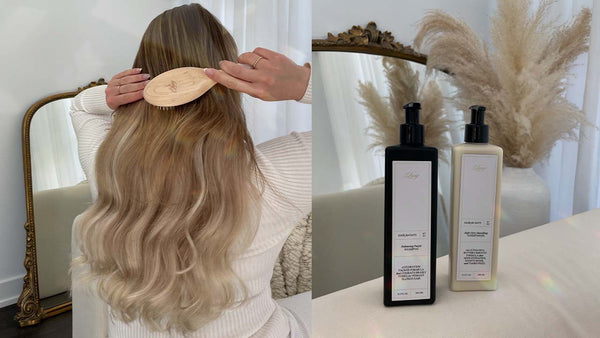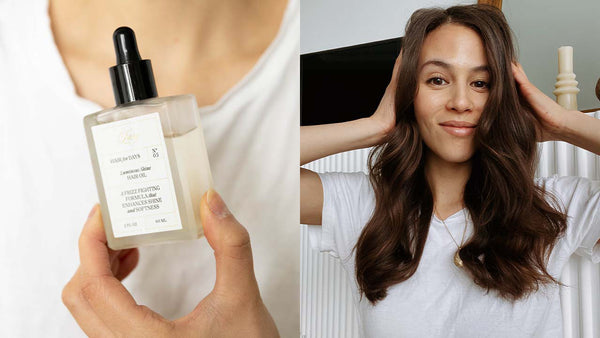To dye or not to dye? That is the question.
Although we're not colourist experts here at Luxy, we can surely tell you a thing or two about what happens when you colour your hair. In this blog post, we'll cover the basics of what really goes on when your hair is being dyed, as well as different colouring methods. Is it really as damaging as we're often led to believe? We'll get to that in a bit, but first things first.

What's in a hair, anyway?
The main ingredient in our hair is a protein called keratin, which is also what our fingernails are made of. Keratin is colourless and is arranged in overlapping scales in a hair strand, which makes it flexible. Pretty neat, huh?
Not to get too scientific on you, here is a basic diagram of what a hair strand looks like:
a. Cortex - this is the middle part of the hair strand, which contains moisture and melanin (pigment that gives your hair its colour!)
b. Cuticle - this is the protective outer layer of the hair strand, which actually determines how healthy your hair looks! If the cuticle is smooth, your hair looks silky and shiny. If the cuticle is raised, your hair looks more dry and damaged.
For science enthusiasts: eumelanin is the dark pigment which gives black and brown hair colour, and phaeomelanin is a lighter pigment that gives hair red, orange, and golden blonde colours. The mix of these two varieties of melanin is what gives you your unique hair shade :) Lack of pigment results in white or grey hair.
So, what happens when hair is coloured?
Permanent Hair Colour
This is a two step process. When permanent hair dye is applied to the hair, ammonia (alkalizing agent) causes the cuticle to 'open up' and let the dye in. Then, peroxide (oxidizing agent) is used to penetrate into the hair cortex and remove your existing hair colour (melanin). Once that happens, the new colour is left in your hair cortex, leaving it a brand new colour! Conditioner is used to close the cuticle back to seal the new colour in.
This is also the process used when bleaching or lightening your hair, except the melanin is '201Ceaten away" or extracted until you get the lightened shade that you decide (and your natural hair colour cannot be replaced until it grows back in!).
Semi-permanent Hair Colour
This is a more gentle colouring process which usually lasts 4-6 weeks. Semi-permanent dye doesn't have ammonia or peroxide, and simply adds tiny colour molecules to the cuticle of your hair without dramatically changing the original hair colour. Since these molecules are small, they eventually escape the cuticle and the colour fades out after several shampoos.
Demi-permanent Hair Colour
This dye lasts a little longer than semi-permanent, about 8-12 weeks, has no ammonia, but a little bit of peroxide. This type of hair colour coats each hair strand with colour and creates larger molecules in the hair cortex, which is why it lasts a little longer.
Will colouring my hair damage it?
So, our lovelies, as you've read above - hair colouring is quite the process! If you do decide to colour your hair, of course, we recommend opting for semi-permanent hair dyes, as they are the least damaging to your hair. Permanent hair dyes are the most harmful, and if used too often, can result in damaged and dry hair. Although conditioners do help seal the cuticle after the colouring process is finished, the hair strand will not revert to the condition it was in originally without your help.
If you colour your hair, make sure to keep it moisturized, avoid using hot tools as much as possible, and use hair products designed specifically for coloured hair.
One more thing...
Unless you're an expert behind the science of hair colouring, we strongly recommend having your hair coloured by professionals! There are many factors that affect how hair colouring works, such as your current hair shade, hair type, and condition. Since these factors can greatly affect the outcome of your hair colour, it's best to trust a professional in order to achieve that beautiful hair colour that you are looking for.
